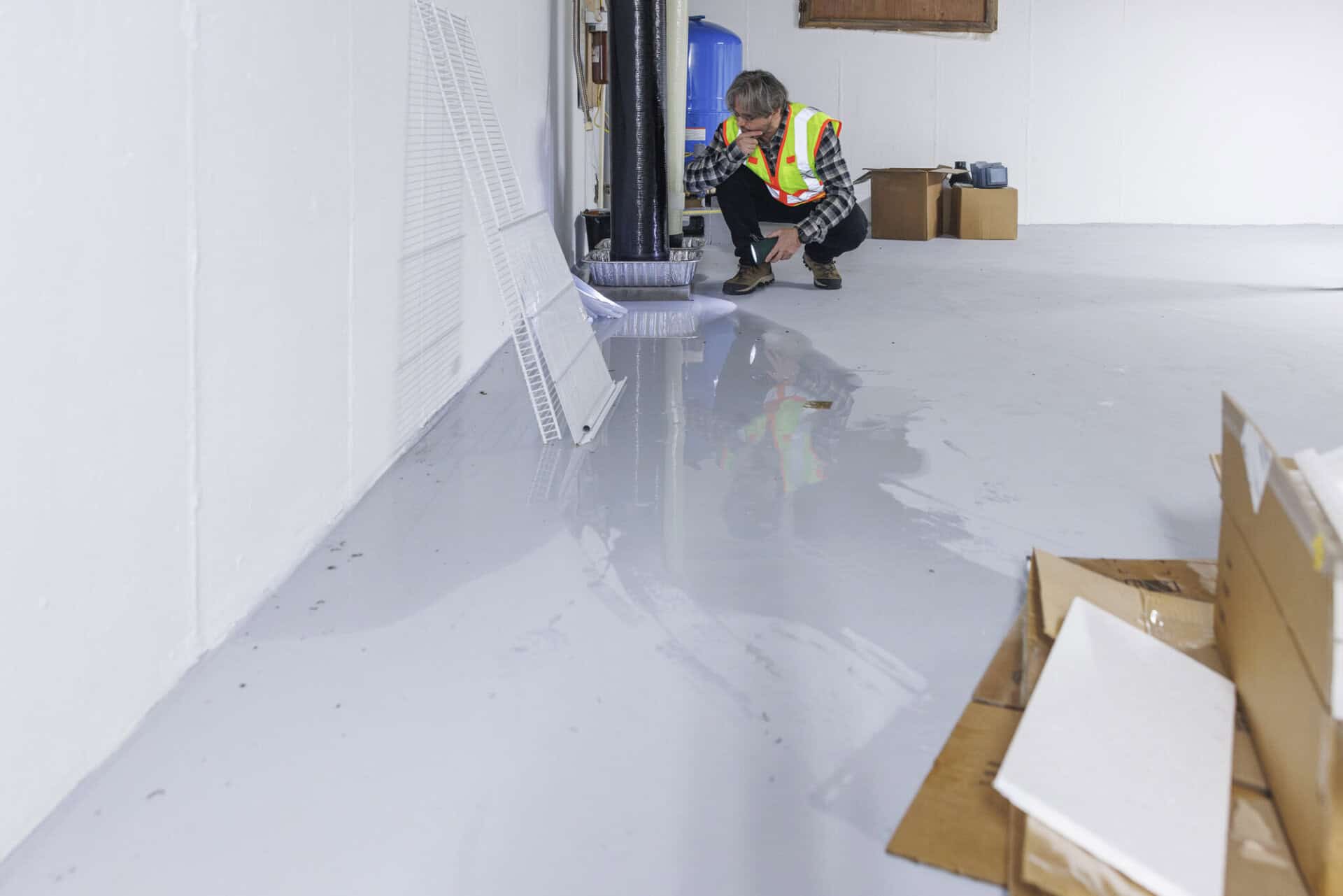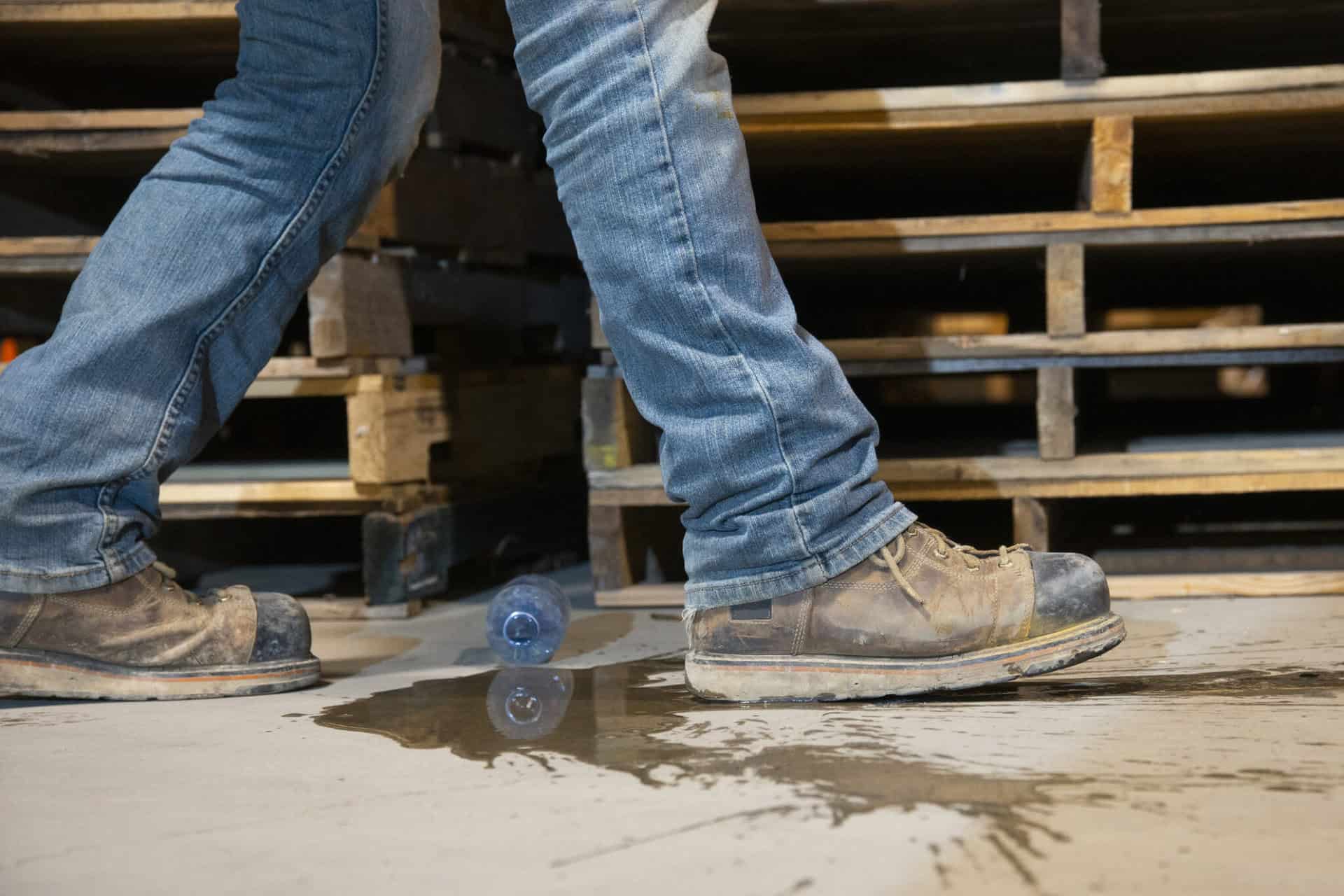Preventing Slips and Falls: A Comprehensive Guide
Here’s how to address specific unsafe conditions:

Wet Surfaces
Prevent Water Accumulation: Divert water away from walking surfaces using ditches, drains, or other methods. If drying the floor is not feasible, use duckboards or similar devices to keep feet from direct contact with the wet surface. Alternatively, apply an abrasive (nonskid) coating to the area.

Leaks and Spills
Address the Source: Fix leaks at their source and implement maintenance and inspection routines to prevent future occurrences. Employees should be trained to clean up spills immediately. If immediate cleanup isn’t possible, cordon off the affected area to reduce slip and fall risks.
Oil or Grease
Contain and Clean Prevent oil or grease from reaching the floor at the source. Where prevention is not possible (e.g., under vehicles), wipe up excess oil or grease and use nonflammable absorbents to clean up residue. Dispose of oil-soaked rags and absorbents safely and promptly.
Rain, Ice, or Snow
Control External Elements: Use canopies, eaves troughs, and proper downspout placement to manage rain, ice, or snow. Clear snow promptly to prevent it from packing down. Apply safe commercial compounds to melt ice and use coarse sand for traction on ice that cannot be removed. Employ door mats or rubber runners at entrances to prevent rainwater, snow, and ice from entering buildings.
Objects on the Floor
Eliminate Clutter Prevent tripping and slipping hazards by removing scrap, tool parts, and other debris from floors. Provide and use appropriate containers for scrap and tools, and train employees to pick up items they see. Regular housekeeping procedures and inspections are essential.
Smooth Surfaces– increase Traction: For smooth surfaces, make them as non-slippery as possible. For example, terrazzo steps should have “roughened” nosings, such as carborundum or nonskid strips. Apply nonslip materials or coatings to areas like running boards, catwalks, and machine steps. Consider anti-slip coatings with abrasives or anti-slip materials like grilles and corrugated metal plates.
Polishing Waxes
-Choose the Right Treatment: Different floor types—hardwood, rubber tile, cork, etc.—require specific cleaning and preservation methods. Consult the flooring or treatment material manufacturer to select the appropriate anti-slip wax or treatment for your floor type.
Nonskid Mats and Runners
Enhance Safety: Use nonskid mats, runners, or carpet strips to prevent slips and falls, especially in high-traffic areas.
By taking these steps, you can significantly reduce the risk of slips and falls, ensuring a safer environment for everyone.
Remember: Prevention is key to minimizing slips and falls. Investing a little time and resources now can save you from significant problems and costs in the future. Stay proactive and maintain a safe environment for all.
